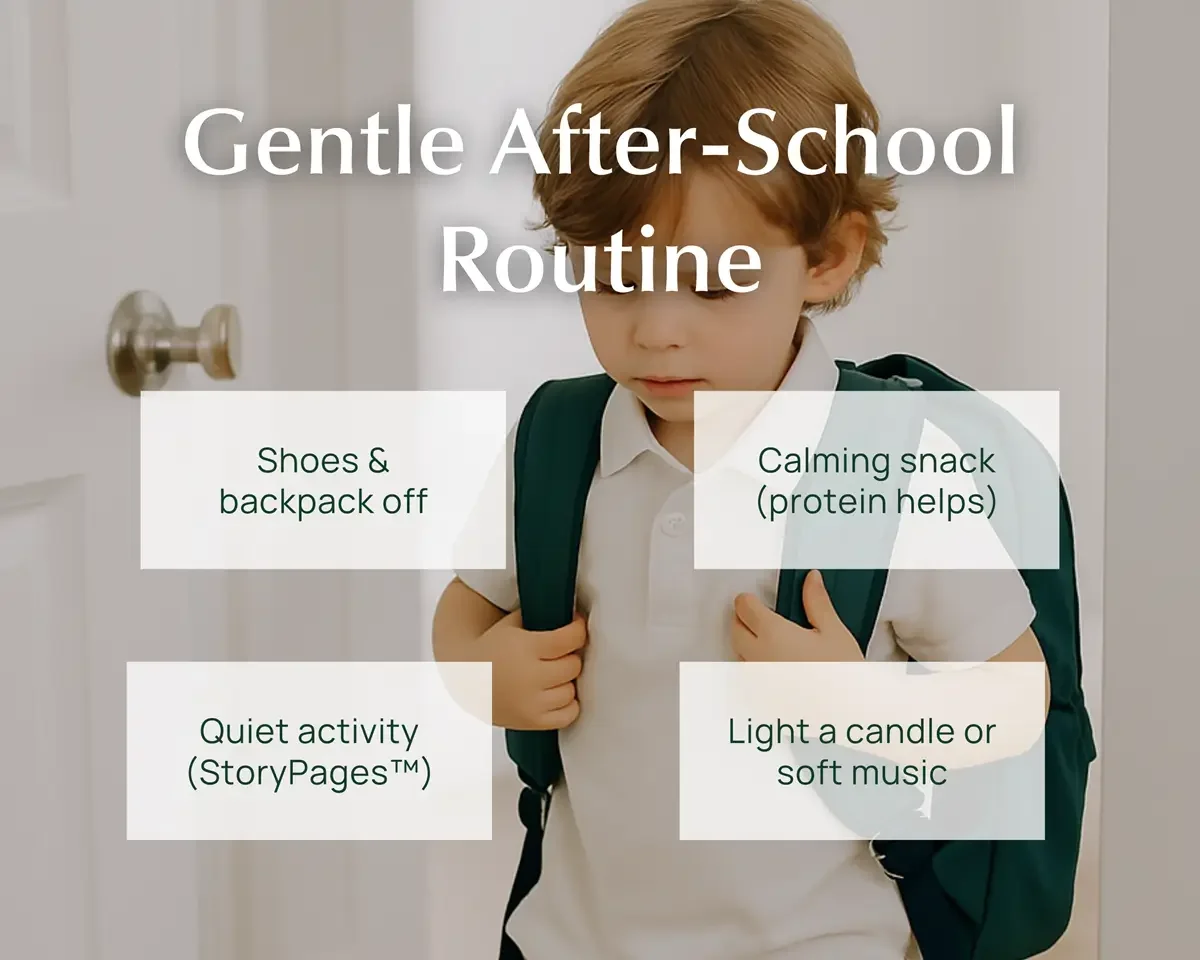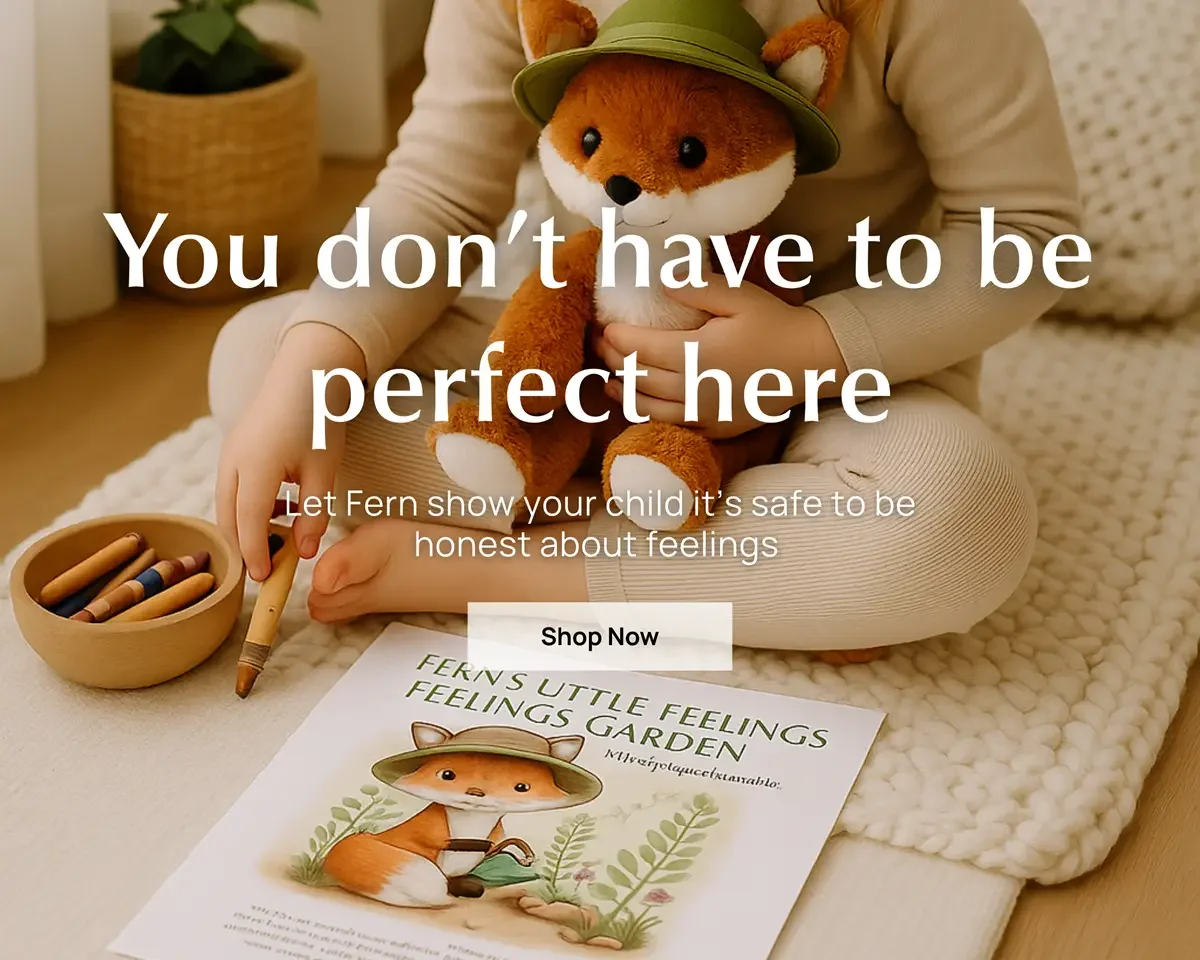How to Handle After-School Meltdowns with Emotional Safety
You packed the lunch.
You survived drop-off.
You cheered them on.
And now it’s 3:30 p.m.
Tears. Yelling. Silence. A total refusal to do anything.
Before you assume something went wrong, know this: meltdowns after school aren’t a sign of failure.
They’re a release. A transition.
And—believe it or not—they’re a sign that your child feels safe with you.
What Causes After-School Meltdowns?
All day long, kids hold it together.
They listen. Sit still. Raise hands. Navigate social dynamics.
They manage sensory input, emotional expectations, and the invisible effort of performing okay in a space that isn’t always emotionally accommodating.
By the time they’re back in your care, their nervous system is tapped.
That emotional backpack? Overflowing.
And when they finally feel safe… they let it out.
1. Say Less. Sit Closer.
Try this script:
“It looks like your body needs a break. I’m here when you’re ready.”
Hold them, if they want.
Stay near, even if they don’t.
Resist the urge to jump into questions.
Just make space for them to land.
2. Build a Gentle Decompression Routine
Children often need help transitioning from holding it together to letting it go.
A gentle, predictable rhythm can help:
Take off shoes and backpack
Offer a calming snack (protein helps)
Light a candle or play soft music
Sit together with a StoryPages™ printable or a simple coloring page
This rhythm isn’t about fixing the meltdown.
It’s about telling their body: You’re home now. You’re safe.
3. Let Daisy Model the Cost of Pretending
In The Loud Things I Didn’t Choose, Daisy spends the day trying to be perfect—not because anyone asked her to, but because she’s afraid that being honest about her feelings might disappoint someone she loves.
By the time she’s home, she’s exhausted. Not from the day itself—but from trying to keep it all in.
This is common in children who are thoughtful, sensitive, or eager to please. They hold their feelings tightly at school and collapse emotionally once they’re back with someone they trust.
Try saying:
“You don’t have to be perfect here. You can just be you.”
Then gently ask:
“Do you think Daisy was pretending to feel okay, even when she didn’t? What helped her stop pretending?”
Daisy shows kids—and caregivers—that emotional honesty is something we earn, not something we demand.
4. Use Fern to Talk About Patience and Progress
When your child seems irritable, restless, or disappointed after school, they might not be reacting to a moment—but to a feeling that nothing’s working.
That kind of internal frustration can be hard to name, especially for kids who are trying so hard to grow.
In Fern’s Little Garden, Fern plants a special seed and waits… and waits… and nothing happens. She wonders if she did something wrong. But with time, and a little help, she learns that growth doesn’t always show itself right away.
After reading, try asking:
“Is there something you’re waiting for or hoping will change?”
“Have you ever felt like things weren’t working, even though you were trying hard?”
Fern reminds children—and grown-ups—that frustration is part of the process. And that slow, invisible growth still counts.
5. Offer a Transition Object
Sometimes a small, familiar item can act as a bridge from “school mode” back to “safe at home.”
Consider offering:
A StoryPages™ “How Do You Feel?” check-in, they can color
Their favorite Plush Pal™ for sensory grounding
A warm drink or cozy corner to unwind in
These aren’t rewards for a meltdown.
They’re rituals of reconnection—ways to say: I see you. You’re home.
Melted Down ≠ Misbehaving
Your child’s after-school meltdown isn’t misbehavior.
It’s an emotional exhale.
And you? You’re their soft landing.
Let Daisy hold the pressure to perform.
Let Fern hold the frustration of growing.
Let you hold the space in between.
If your child isn’t ready to talk yet, that’s okay.
Let Daisy, Fern, Zeke, and Suki help you hold the quiet moments, too.



